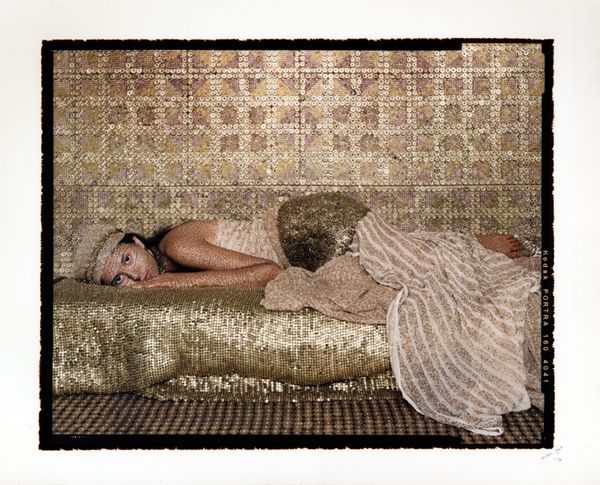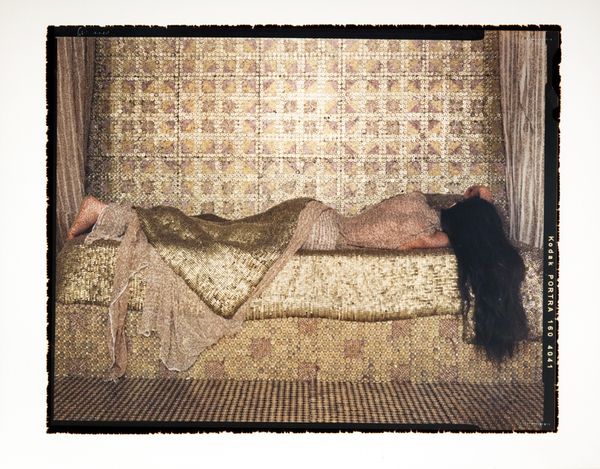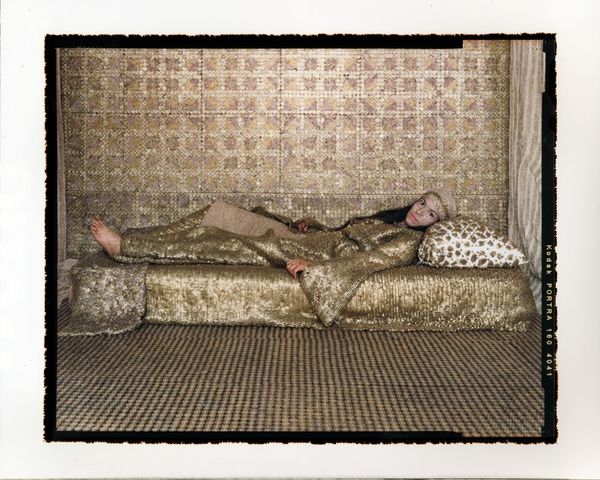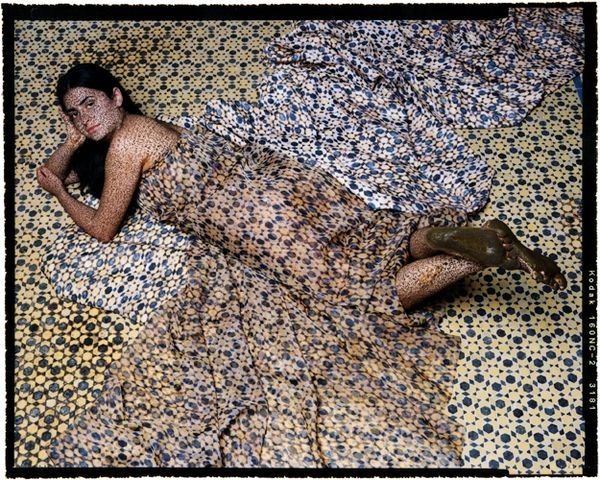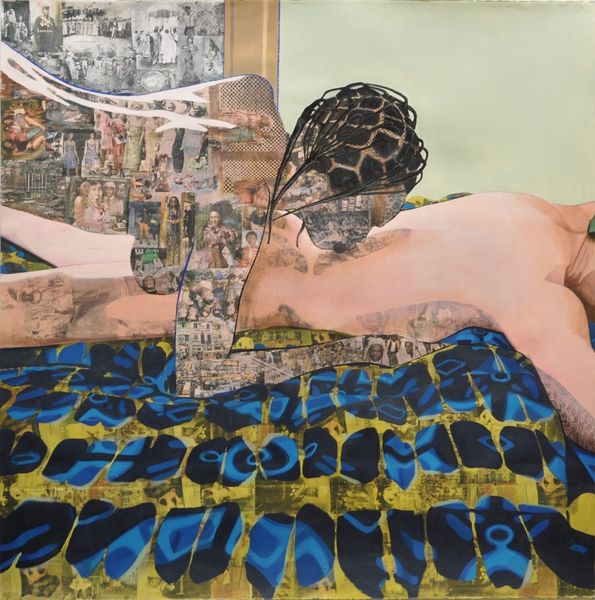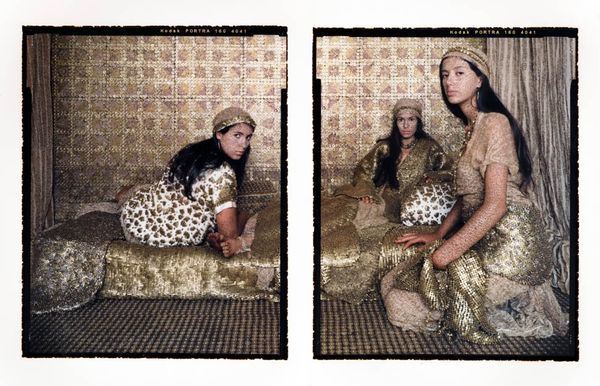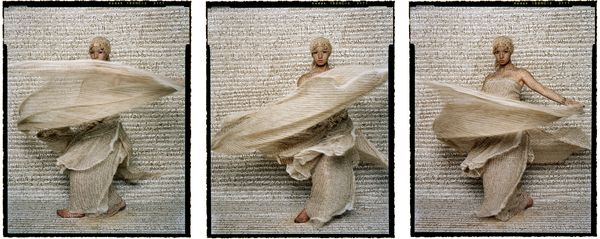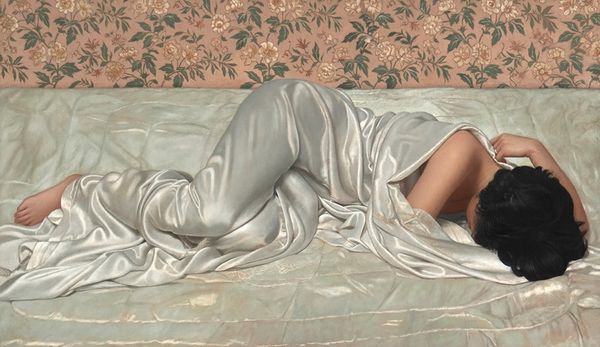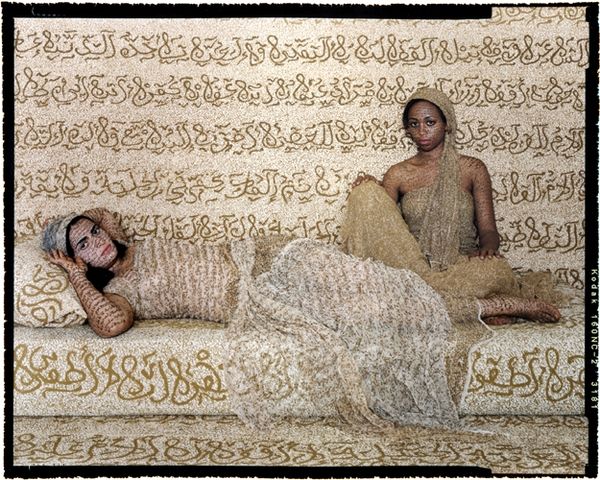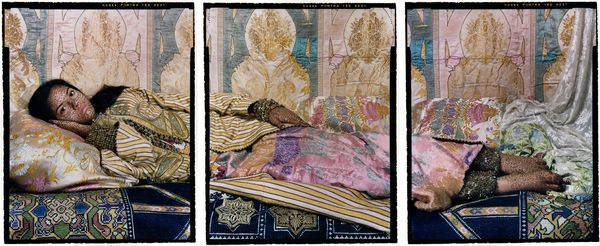
mixed-media, photography
#
portrait
#
mixed-media
#
contemporary
#
photography
#
postcolonial-art
#
orientalism
#
human
#
nude
#
mixed media
Copyright: Lalla Essaydi,Fair Use
Curator: Lalla Essaydi's "Bullet Revisited #31 Diptych," created in 2013, is a mixed-media piece that incorporates both photography and painting. The piece makes direct reference to the orientalist genre. Editor: Whoa. My first thought is opulence, almost suffocatingly so. Gold everywhere! And then this contrasting feeling of stillness, even… sadness? It feels incredibly staged but very powerful. Curator: Essaydi often explores themes of identity, gender, and representation within the context of Islamic culture. She directly confronts and subverts orientalist tropes that historically objectified and misrepresented women from the Middle East and North Africa. It’s all a stage, you see? But it is one where women are taking ownership of that stage. Editor: It's interesting you say "ownership". This gold… is it beautiful? Is it gaudy? It feels both precious and imprisoning, and then, you have this veiled figure lying so listlessly among these elaborate textiles in each panel. I feel like she has completely disappeared into this setting… but that cannot be entirely right, can it? Curator: That is certainly part of the conversation here. The bullets – she has mentioned it refers to repurposing empty bullet casings, right? The image confronts viewers with questions about beauty, violence, and cultural constraints imposed on women, as well as the roles women assume, sometimes by force. In some ways, the gold makes literal the fetishization inherent to orientalist fantasy. Editor: The "revisited" aspect of the title is interesting too. As if this image is referencing a photograph or portrait in some way. Curator: Yes. Her work always initiates a dialogue between art history and contemporary theory. The "Revisited" titles address how images persist, haunt, are reshaped in culture. It also places this photograph in conversation with other photographs taken by the artist using very similar staging, textiles, and materials. She wants to explore how the intersectional identities shape subjectivity and agency. Editor: It definitely complicates what I initially perceived as “sadness." Now, I see it as more of a controlled sorrow. Curator: I'd say so, yes. Essaydi's skillful combination of photography and painting—the textures, patterns, and the sheer scale—invite viewers to actively engage with questions regarding cultural representation. Editor: Well, it has certainly disrupted my initial impression. Thank you!
Comments
No comments
Be the first to comment and join the conversation on the ultimate creative platform.
